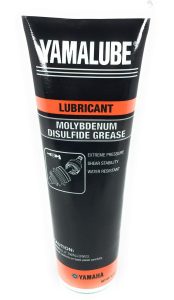Overview
In the world of industrial lubricants, molybdenum disulfide, commonly known as MoS2, and graphite stand out due to their unique properties. However, MoS2 often emerges as the superior choice in various applications, surpassing graphite in aspects like performance, durability, and overall efficiency.
Key Characteristics of MoS2
Superior Heat Stability
MoS2 exhibits remarkable stability under high temperatures. Unlike graphite, which starts to oxidize at temperatures above 400°C, MoS2 maintains its structural integrity and lubricating properties up to approximately 500°C. This quality makes MoS2 an ideal choice for high-temperature applications.
Outstanding Load Bearing Capacity
The load bearing capacity of MoS2 significantly outperforms that of graphite. MoS2 can withstand heavy loads without breaking down, ensuring smooth operation of machinery under high-pressure conditions. This attribute is critical in industries where equipment undergoes heavy mechanical stress.
Exceptional Friction Reduction
MoS2 reduces friction more effectively than graphite. Its coefficient of friction is typically around 0.03 to 0.06, compared to graphite's 0.1. This reduced friction leads to decreased wear and tear on machinery, enhancing the lifespan of equipment.
Better Environmental Resistance
MoS2 shows greater resistance to water, chemicals, and other environmental factors compared to graphite. This resistance ensures consistent performance in various environmental conditions, making MoS2 a more reliable choice in challenging settings.
Comparison with Graphite
Cost Efficiency
While the initial cost of MoS2 might be higher than graphite, its superior performance and longevity result in lower overall costs in the long run. The reduced need for frequent replacements and maintenance with MoS2 translates to significant savings.
Versatility
MoS2's versatility allows for its use in a broader range of applications than graphite. Its effectiveness in extreme conditions makes it suitable for use in aerospace, military, and automotive industries, where reliability and performance are paramount.
Environmental Impact
Graphite lubricants often leave residues that can be challenging to clean and might have environmental implications. In contrast, MoS2 lubricants offer a cleaner solution with minimal environmental impact.

Conclusion
Molybdenum disulfide lubricant stands out as the superior choice when compared to graphite, especially in applications demanding high thermal stability, load capacity, and environmental resistance. Its ability to reduce friction effectively and its durability make it a cost-effective and reliable solution for various industrial applications.
For more information on molybdenum disulfide lubricants, please visit this link.